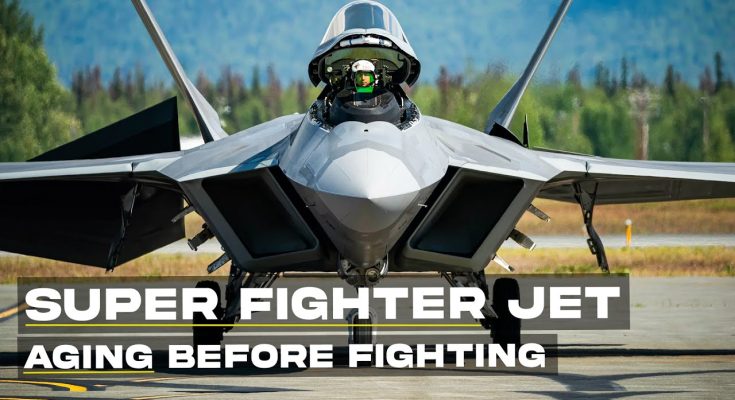The F-22 Raptor is often hailed as one of the most advanced fighter jets ever built. Developed by Lockheed Martin for the United States Air Force (USAF), the F-22 was designed to achieve air superiority through a combination of stealth, speed, agility, and advanced avionics. When it was first introduced in 2005, the Raptor was a symbol of technological dominance, featuring cutting-edge capabilities that left rival aircraft in the dust. However, despite its incredible potential, the F-22 is beginning to show signs of age, raising questions about its long-term role in modern combat.
A Game-Changer in Stealth and Performance
The F-22 Raptor’s design focused on providing the U.S. with a fighter jet that could operate undetected by enemy radar while also outmaneuvering any adversary in the air. Its stealth features, including an advanced radar-absorbent skin and specialized coatings, allow it to avoid detection while flying at supersonic speeds. Additionally, the Raptor is capable of supercruise, meaning it can sustain supersonic flight without needing to rely on fuel-hungry afterburners, giving it a strategic advantage in combat scenarios.
But what truly sets the F-22 apart is its combination of speed, agility, and radar-evading design. Its thrust vectoring capabilities enable the aircraft to execute extreme maneuvers, making it a deadly adversary in aerial dogfights. These features made the F-22 a critical part of the U.S. Air Force’s strategy for maintaining air superiority, capable of taking on multiple adversaries at once.
The Aging Raptor
Despite its technical prowess, the F-22 is starting to face the challenges of aging before it has even entered widespread combat. Initially, the U.S. Air Force planned to purchase 750 F-22s, ensuring a strong fleet capable of maintaining global air dominance. However, due to rising costs and budget constraints, only 187 Raptors were built, and production was halted in 2009.
This relatively small fleet has led to growing concerns about the F-22’s long-term viability. As the aircraft ages, its maintenance and operational costs increase, placing a financial burden on the Air Force. The advanced technologies embedded in the Raptor, while impressive, require constant upkeep and specialized knowledge, meaning that replacement parts and skilled technicians are in limited supply. As the fleet ages, these challenges will only multiply, raising concerns about whether the U.S. can afford to keep the F-22 operational.
A New Generation of Aircraft
One of the key factors complicating the F-22’s future is the emergence of newer, more versatile fighter jets. The F-35 Lightning II, a fifth-generation fighter with advanced stealth capabilities, is quickly becoming the centerpiece of the U.S. Air Force’s strategy. While the F-22 excels in air superiority, the F-35 is a multirole aircraft capable of engaging in air-to-ground and electronic warfare missions, giving it a broader utility across various types of conflicts. The F-35’s affordability, flexibility, and multi-mission capabilities make it an attractive alternative to the F-22, raising questions about whether the F-22’s air superiority capabilities will still be necessary in the future.
Additionally, emerging technologies in unmanned aerial vehicles (UAVs) and advanced drone systems are beginning to alter the landscape of aerial combat. These systems offer the potential to perform many of the same functions as manned fighter jets while reducing the risks to pilots and lowering operational costs.
The End of an Era?
While the F-22 Raptor remains a formidable aircraft, it faces a future filled with uncertainty. The combination of its high maintenance costs, relatively small fleet size, and the rise of newer, more versatile fighter jets poses significant challenges for the Air Force. That said, the F-22’s technological achievements will likely continue to influence the design of future combat aircraft. As it ages, the Raptor will remain an essential part of the U.S. Air Force’s toolkit, but its role in the military’s long-term strategy may need to evolve.
In conclusion, the F-22 Raptor is a testament to the United States’ commitment to air superiority and technological innovation. Yet, as it ages and faces increasing competition from newer technologies, its legacy as the ultimate fighter jet may soon be overshadowed by the next generation of aircraft. The question remains: Can the Raptor continue to soar, or is it destined to be grounded before it has fully proven its worth in combat?



